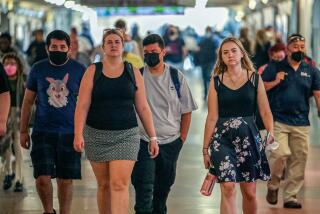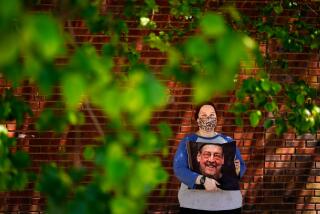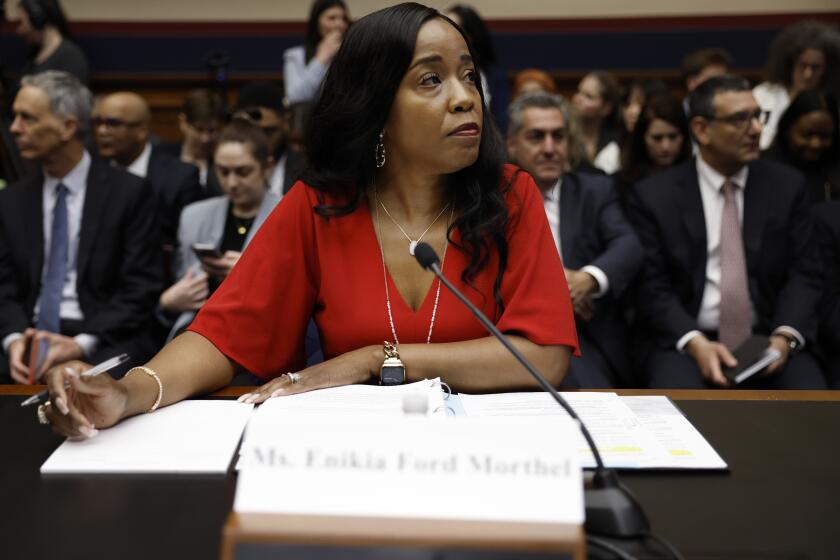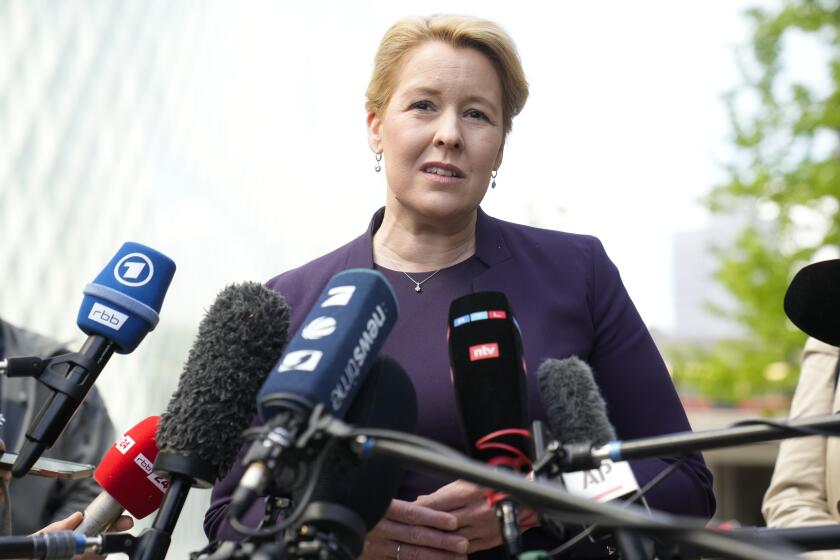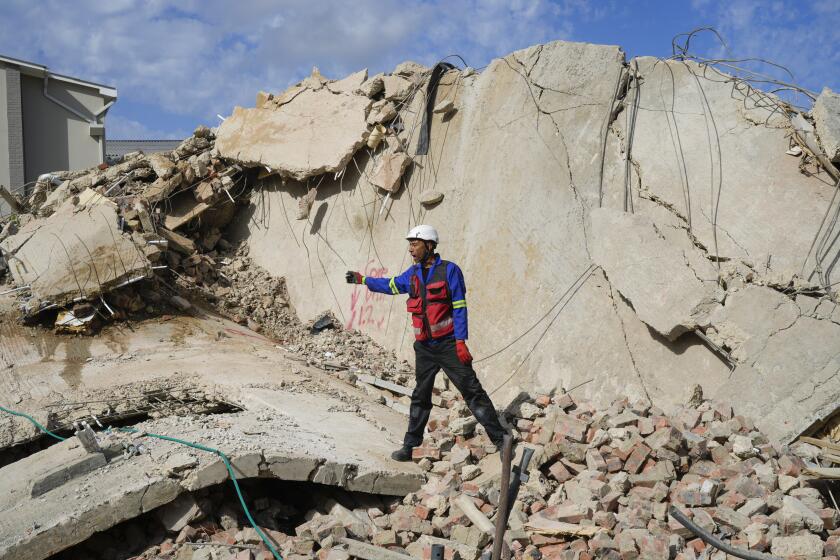Daily COVID-19 deaths in U.S. reach highest level since May
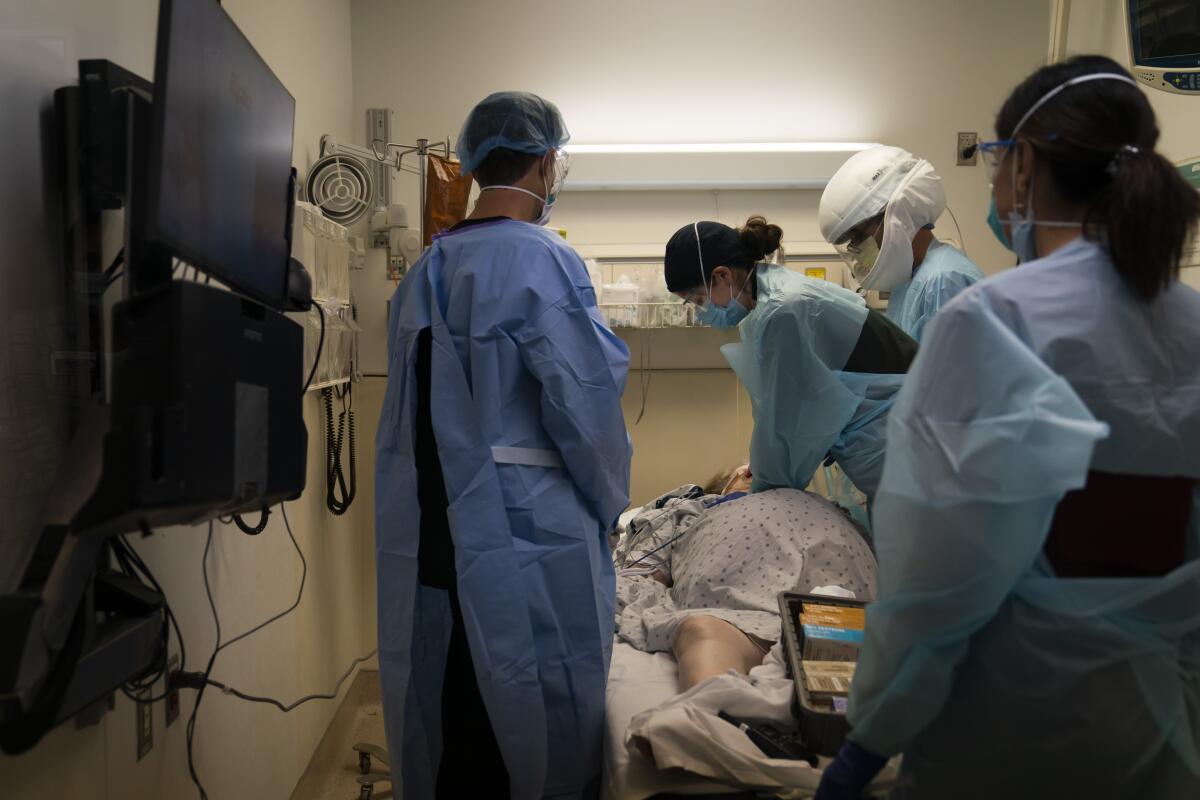
The coronavirus is taking an increasingly dire toll across the U.S. just as a vaccine appears close at hand, with the country now averaging more than 1,300 COVID-19 deaths per day — the highest level since the calamitous spring in and around New York City.
The U.S. death toll is nearly 254,000, by far the most in the world. Confirmed infections exceed 11.8 million, after the biggest one-day gain on record Thursday — almost 188,000. And the number of people in the hospital with COVID-19 hit another all-time high, at more than 80,000.
With health experts fearing that Thanksgiving travel and holiday gatherings will fuel the spread of the virus, many states and cities are imposing near-lockdowns or other restrictions. California ordered a curfew from 10 p.m. to 5 a.m. starting Saturday, covering 94% of the state’s 40 million residents.
President Trump appears not to be learning enough about what he needs to do to fight a pandemic, plus more from the week in Opinion.
The Texas border county of El Paso, where more than 300 people have died from COVID-19 since October, is advertising jobs for morgue workers capable of lifting bodies weighing 175 pounds or more. Officials are offering more than $27 an hour for work described as not only physically arduous but “emotionally taxing as well.”
The county had already begun paying jail inmates $2 an hour to help move corpses and has ordered at least 10 refrigerated trucks as morgues run out of room.
COVID-19 deaths in the U.S. are at their highest level since late May, when the Northeast was emerging from the first wave of the crisis. They peaked at about 2,200 a day in late April, when New York City was the epicenter, and bodies were being loaded onto refrigerated trucks by forklift.
Amid the bleak new statistics, Pfizer said Friday it is asking U.S. regulators to allow emergency use of its COVID-19 vaccine, setting in motion a process that could make the first, limited shots available as early as next month, with healthcare workers and other high-risk groups likely to get priority.
But it could take months before the vaccine becomes widely available. Pfizer has said the vaccine appears 95% effective at preventing the disease.
In Texas, Republican Gov. Greg Abbott has ruled out another shutdown and singled out El Paso County leaders for not enforcing restrictions already in place. The state’s attorney general, Ken Paxton, likened the county’s chief administrator to a “tyrant” after Paxton won an appeals court ruling blocking local leaders from shutting down gyms and other nonessential businesses.
Ohio Gov. Mike DeWine, also a Republican, failed to persuade leaders of the GOP-controlled legislature to reject a bill that would limit his administration’s power to deal with the crisis.
At issue is a Senate bill that would ban the state health department from issuing mandatory quarantine orders enforced against people who are not sick or exposed to the disease — such as the governor’s order, announced Tuesday, setting a 10 p.m. curfew.
DeWine said he will veto the bill when it reaches his desk; Republicans in both the House and Senate have enough votes to override the veto if they choose.
“This bill is a disaster,” DeWine said Thursday. “This is not a bill that can become law.”
In California, the curfew will be in place in 41 of 58 counties. Its impact will depend heavily on voluntary compliance. Sheriffs of some counties said they won’t enforce it. Under the rules, people who are not on essential errands must stay home after 10 p.m.
The curfew is less strict than the near-total ban on nonessential business and travel that Gov. Gavin Newsom imposed in March, which he credited with flattening the rate of COVID-19 cases.
In Kansas, new cases have risen to an average of more than 2,700 per day, nearly four times higher than a month ago.
“Our hospitals are overwhelmed with coronavirus patients. Healthcare workers are burned out,” Democratic Gov. Laura Kelly said Friday.
In rural western Kansas, the number of people seeking testing at a Kearny County clinic doubled over the past week to about 80 per day, said Dr. Lane Olson, a family practice doctor.
He said nurses had to make multiple calls this week before the University of Kansas Hospital, about 360 miles away in Kansas City, agreed to take one of his coronavirus patients whose oxygen levels were falling. Then several more calls were needed to find an air transport company that could fly her there.
In Topeka, the emergency department at Stormont Vail Hospital has taken over a back hallway and a waiting room, with some patients waiting hours to be moved to a regular room. The crunch has area officials considering opening a field hospital.
Among other developments:
• The mayor of Newark, N.J., said residents should stay home for 10 days starting next week because of the rise in cases.
• In Arizona, four Democratic mayors urged Republican Gov. Doug Ducey to impose a statewide requirement for people to wear masks in public. The move came as health officials reported more than 4,000 additional COVID-19 cases for the second consecutive day.
Ducey’s chief of staff, Daniel Scarpinato, pushed back on the request, saying the mayors are doing little to enforce their own mask ordinances or ensure that existing safety measures put in place by the governor are being enforced.
• In New Mexico, where hospitals are facing a crunch, the state reopened a vacated former hospital in Albuquerque for use by COVID-19 patients.
More to Read
Start your day right
Sign up for Essential California for news, features and recommendations from the L.A. Times and beyond in your inbox six days a week.
You may occasionally receive promotional content from the Los Angeles Times.


